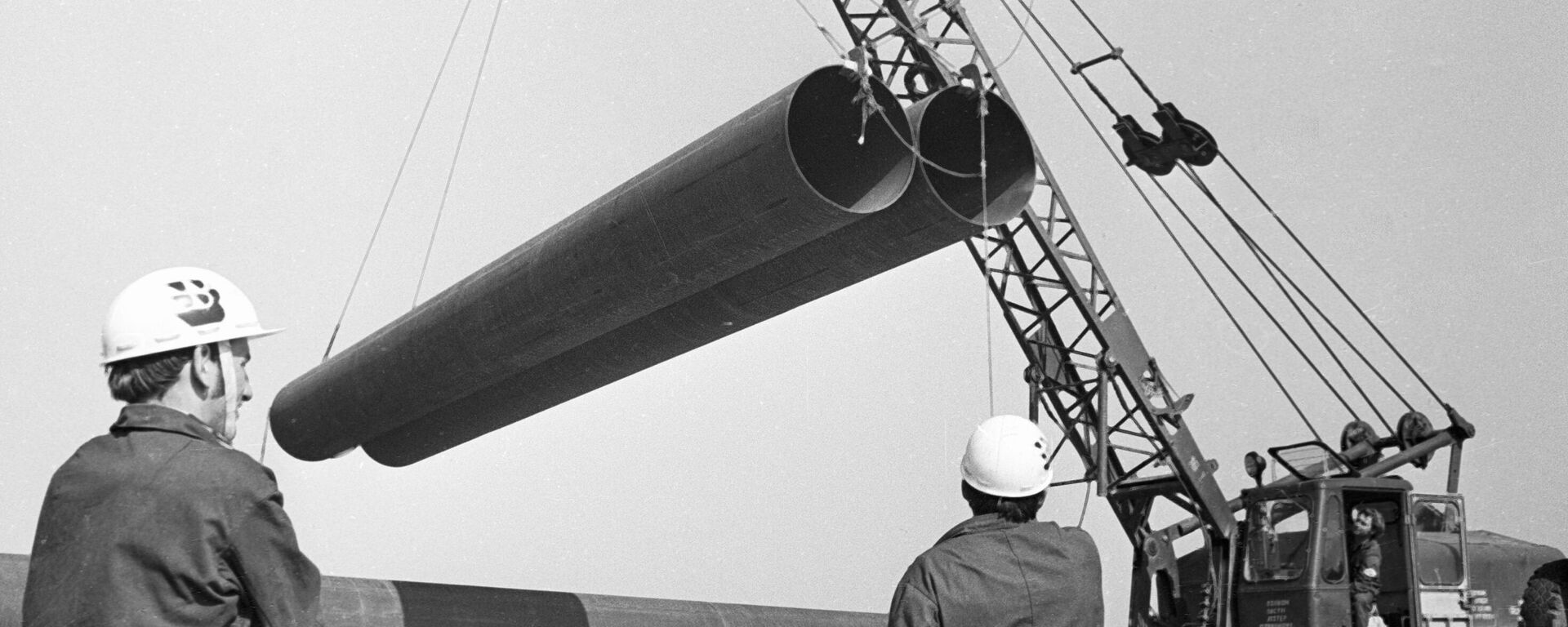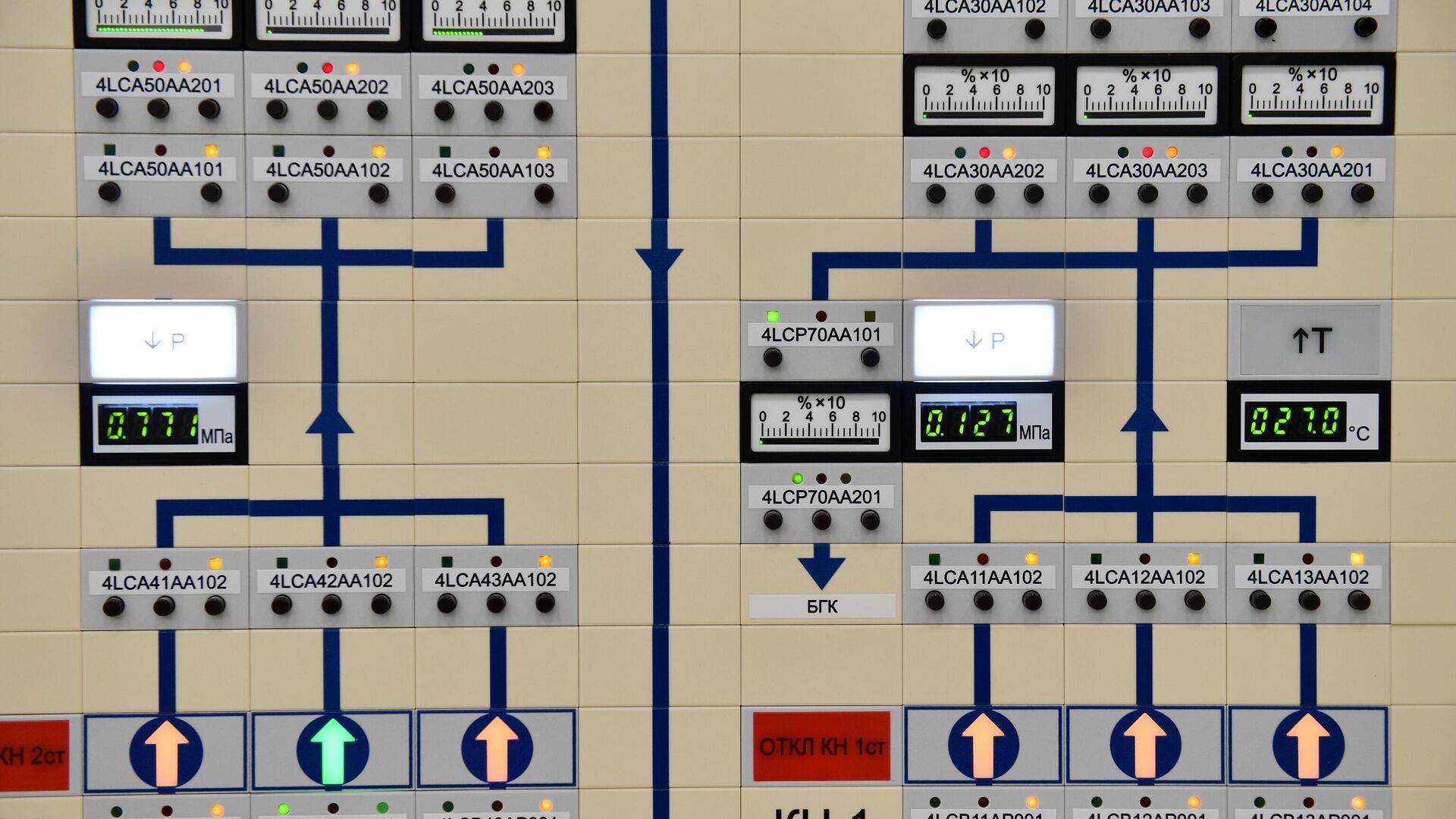https://sputnikglobe.com/20241109/how-russia-can-have-one-of-worlds-greenest-energy-systems-without-falling-into-renewables-dogma-1120836058.html
How Russia Can Have One of World’s Greenest Energy Systems Without Falling Into 'Renewables' Dogma
How Russia Can Have One of World’s Greenest Energy Systems Without Falling Into 'Renewables' Dogma
Sputnik International
Vladimir Putin has highlighted the impressive percentage of low-emissions energy generation in Russia's energy balance. Sputnik asked a leading energy expert for more details on how this is possible.
2024-11-09T19:18+0000
2024-11-09T19:18+0000
2024-11-09T19:21+0000
analysis
russia
vladimir putin
russian energy ministry
energy
alternative energy
nuclear energy
hydropower
https://cdn1.img.sputnikglobe.com/img/07e8/0b/09/1120836198_0:160:3072:1888_1920x0_80_0_0_93c779ad4425579c61089c2abfddd0ea.jpg
In his address at the Valdai Discussion Club this week, President Putin said that Russia has “one of the greenest energy systems in the world,” that “40% of our energy structure being gas-fired power generation,” and that together with nuclear and hydro, Russia’s low-emissions power generation accounts for 85% of its total output.Blasting big polluter countries which he said are trying to impose their 'green agenda' on Russia, Putin said nations should be given the opportunity to live normally, develop, and be offered sources of financing and technologies in the energy sector, not restrictions, if those pushing the agenda truly believe in collective action on the environmental front."We in Russia know first hand [about the processes of global warming, ed.], because here warming is happening faster than in all other regions of the world," Putin said.Decoding the 85% Figure“Low-emission energy sources are those with low levels of greenhouse gas emissions,” Russian Energy Ministry expert and Anselm Scientific Center director Maxim Kanishchev told Sputnik, elaborating on Putin’s figures.As far as renewables – such as wind and solar power, are concerned, Kanishchev said that for Russia, over 80% of whose energy is already “green,” it makes little economic sense to focus on these alternatives (which account for as little as 1% of the country’s energy balance), especially as there’s still plenty of work to be done on reducing emissions from existing sources, and reducing energy use in the economy in general.“We still have huge opportunities for savings – including about 300 billion rubles a year in the oil and gas sector alone,” he said.Russia has had one of the largest, most sophisticated, cleanest and diversified energy networks in the world thanks in large part to its Soviet legacy, during which hundreds of large-scale energy projects were built, including nuclear plants, hydroelectric dams and generation facilities, gas-burning generation facilities and vast pipeline networks connecting them. Russia also enjoys a unified energy grid connecting most major population centers stretching from Europe to Asia, and has used this grid to dependably sell electricity at competitive prices to its neighbors.
https://sputnikglobe.com/20240928/brics-expansion-to-boost-cooperation-in-gas-renewables--s-african-energy-minister-1120329325.html
https://sputnikglobe.com/20241015/druzhba-oil-mega-pipeline-that-evaded-us-sabotage-to-power-eastern-europes-economic-boom-1120559902.html
russia
Sputnik International
feedback@sputniknews.com
+74956456601
MIA „Rossiya Segodnya“
2024
News
en_EN
Sputnik International
feedback@sputniknews.com
+74956456601
MIA „Rossiya Segodnya“
Sputnik International
feedback@sputniknews.com
+74956456601
MIA „Rossiya Segodnya“
is russia a big polluter, does russia pollute a little or a lot, what is russia's energy balance
is russia a big polluter, does russia pollute a little or a lot, what is russia's energy balance
How Russia Can Have One of World’s Greenest Energy Systems Without Falling Into 'Renewables' Dogma
19:18 GMT 09.11.2024 (Updated: 19:21 GMT 09.11.2024) Vladimir Putin has highlighted the impressive percentage of low-emissions energy generation in Russia's energy balance. Sputnik asked a leading energy expert for more details on how this is possible.
In his address at the Valdai Discussion Club this week, President Putin said that Russia has “one of the greenest energy systems in the world,” that “40% of our energy structure being gas-fired power generation,” and that together with nuclear and hydro, Russia’s low-emissions power generation accounts for 85% of its total output.
Blasting big polluter countries which he said are trying to impose their 'green agenda' on Russia, Putin said nations should be given the opportunity to live normally, develop, and be offered sources of financing and technologies in the energy sector, not restrictions, if those pushing the agenda truly believe in collective action on the environmental front.
"We in Russia know first hand [about the processes of global warming, ed.], because here warming is happening faster than in all other regions of the world," Putin said.
"Incidentally, those who have made the most noise about this subject are acting, unfortunately for everyone, including themselves, in exactly the opposite direction. Coal-based generation in Europe has increased sharply. Just recently, everyone in Europe was making noise about the need to close coal-fired generation. Now they have not only not closed it, but increased it. It's strange, but it's a fact," Putin said.

28 September 2024, 07:49 GMT
“Low-emission energy sources are those with low levels of greenhouse gas emissions,” Russian Energy Ministry expert and Anselm Scientific Center director Maxim Kanishchev told Sputnik, elaborating on Putin’s figures.
“About 15% of our energy comes from hydroelectric power plants with zero greenhouse gas emissions, 20% from nuclear power plants, whose emissions are also minimal. The remaining 65% consists of thermal power plants, about 70% of which run on gas. In this way, 85% of the energy produced in Russia today is produced with minimal emissions,” Kanishchev explained.
As far as renewables – such as wind and solar power, are concerned, Kanishchev said that for Russia, over 80% of whose energy is already “green,” it makes little economic sense to focus on these alternatives (which account for as little as 1% of the country’s energy balance), especially as there’s still plenty of work to be done on reducing emissions from existing sources, and reducing energy use in the economy in general.
“We still have huge opportunities for savings – including about 300 billion rubles a year in the oil and gas sector alone,” he said.
That’s not to mention the environmental considerations, Kanishchev pointed out, highlighting many renewable sources’ “low efficiency, colossal costs, and the colossal harm they do to the environment – with the ecosystems they use often simply destroyed at the root,” whether this be solar farms, wind, tidal, or geothermal power.
Russia has had one of the
largest, most sophisticated, cleanest and diversified energy networks in the world thanks in large part to its Soviet legacy, during which hundreds of large-scale energy projects were built, including nuclear plants, hydroelectric dams and generation facilities, gas-burning generation facilities and vast pipeline networks connecting them. Russia also enjoys a unified energy grid connecting most major population centers stretching from Europe to Asia, and has used this grid to dependably sell electricity at competitive prices to its neighbors.

15 October 2024, 14:06 GMT




